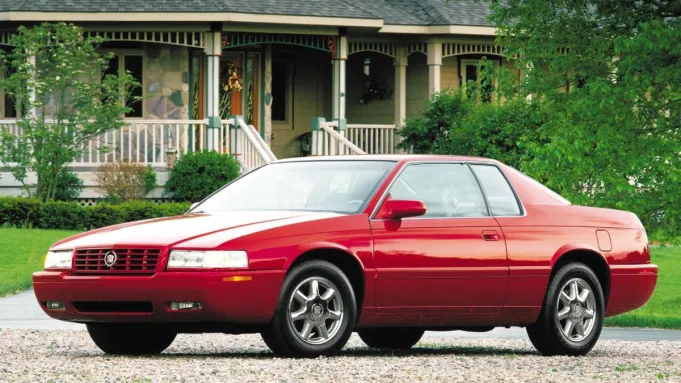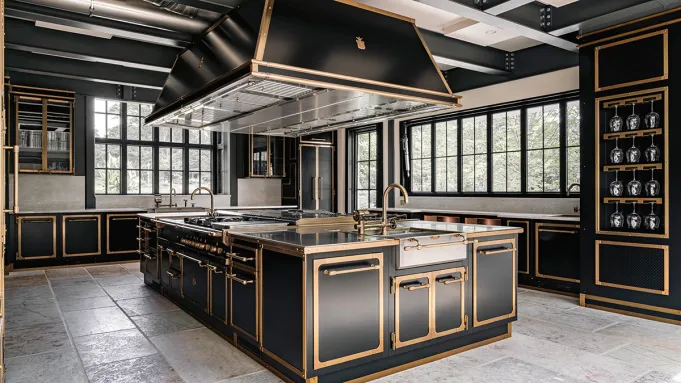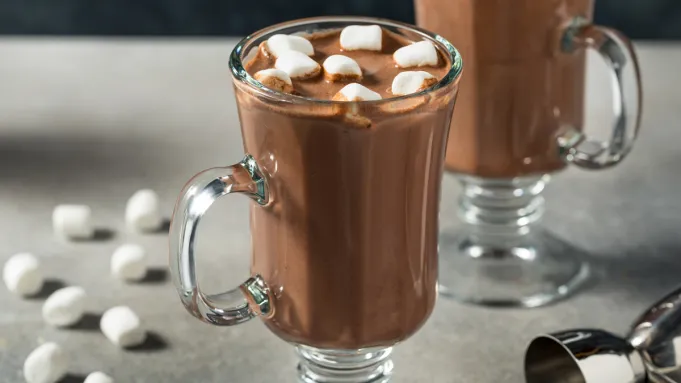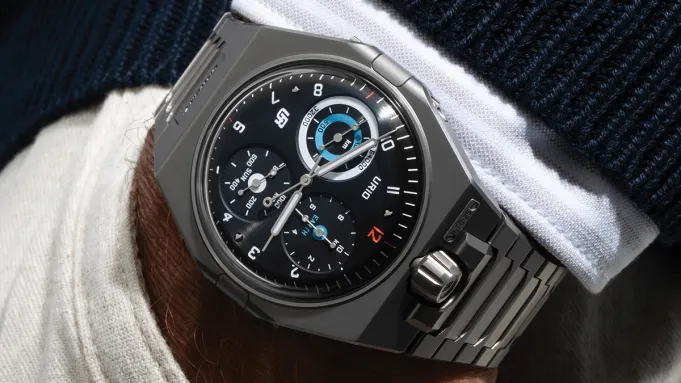
These days, anyone walking into a new car dealership looking for something with two doors and a hard top is liable to find it a frustrating endeavor—and if you don’t want something that qualifies as a sports car, well, your options winnow even more. Coupes may not be an endangered species list just yet, but they’re certainly on the threatened one that can lead there before long.
It wasn’t always this way. Just a few decades ago, the world was rich with coupes for the wealthy, middle-class, and trying-to-survive alike. They didn’t always go faster than sedans or wagons, but they looked like they did — which means they looked better. These cars were a status symbol writ excellence: made for people who desired the ultimate in luxury, but didn’t need (or want) to have to tote around a family in their daily driver. No fancy carmaker worth its stock certificates would dare not offer a high-end two-door model.
Then … it all fell apart.

Tom Gidden, courtesy of RM Sotheby’s
The idea of the coupe body style actually predates the automobile itself, dating back to the days of horse carriages, with early versions appearing in the 1700s before evolving in the following century into the basic body style later adopted by cars: a small hardtop body with a single row of seats inside. From the start, they were considered fashionable transportation, chosen by well-to-do ladies to pop about or driven for ceremonial use. Just as no one today would drive the Rubicon Trail in a Ferrari Roma, no one went about enduring the Oregon Trail in a coupe carriage.
The birth of the automobile at the end of the 19th Century and its explosive growth in the early years of the 20th saw a proliferation of body styles and concepts as to what the car could and should look like, inspired by the multitude of variations found amongst horse-drawn carriages and promoted by the legions of independent coachbuilders who constructed the bodywork for many of the cars that reached the streets. In an effort to clarify things in 1916, the nascent Society of Automotive Engineers attempted to streamline things by establishing formal terms for the many body styles of the era. “Coupe” is officially set down in the guidelines as “an inside-operated, enclosed car seating two or three,” with the note that “a fourth seat facing backward is sometimes added.”
Come the 1930s, the economy had taken a turn for the worse as the Great Depression took hold across America, but things were going better for the coupe. Automotive design had graduated from the still-carriage-like looks of its nascent days into its own form, with sweeping lines and heavy flowing sheetmetal that took full advantage of the effortless power of internal combustion. It was here that the true idea of the luxury coupe came to be: cars with two doors and elegant cabins, hoods as long as a city block hiding powerful engines. Names from Delahaye to Bugatti to Mercedes to Buick all created two-door hardtops that would help define them as builders of high-end automobiles for years to come.

2005 Jaguar XKR
Jaguar
World War II put a harsh freeze on the car industry, as the factories that had been building cars were impressed into building tanks, guns, and aircraft. With the peace dividend that arrived in its wake, however, came an automotive renaissance. The 1950s and 1960s would prove to be the start of the glory days of the luxury coupe in America, with the nation’s economy growing as fast as the ribbons of brand-new interstate being paved from sea to shining sea. Cars like the Lincoln Mark II and Mark III, the Cadillac Eldorado, and Chrysler’s Imperial Southampton line became an unmissable presence on the nation’s roadways, with ornately designed, aircraft carrier-sized bodies clad in extravagant amounts of chrome and offering room for as many as six adults within, proving the SAE’s definition of “coupe” had officially become passé. Detroit’s automakers even came up with a new term to define the class: the personal luxury car.
Even when the Malaise Era hit in the 1970s and a combination of an oil crisis and pollution-fighting policies saw horsepower drop precipitously, the luxury coupe couldn’t be stopped. If anything, it spurred further improvements of the breed. With engines strangled and a new 55-mph speed limit, the appetite for sports cars was drying up, but the buyers who once sought out pure performance still wanted something expensive in a two-door shell; they just wanted more premium features instead of light little bodies. The likes of BMW’s 6 Series, Mercedes-Benz’s 230 C / 280 C and 350 SLC / 450 SLC, and Jaguar’s XJS all joined the fray, offering something a tad more continental than the likes of the Lincoln Continental and its soft-sprung Yankee kin while still delivering the space and comfort high-end buyers craved.
And then came the ice age that would wreak havoc across the entire automotive world, that would uproot the existing hierarchy and leave a new landscape in its wake: the sport-utility vehicle.

BMW 8 Series coupe
AGNIESZKA-DOROSZEWICZ
Four-wheel-drive trucks with wagon bodies instead of pickup beds had been around since Chevrolet revealed the Suburban in the 1930s, and the term “sport utility” had been bandied about since the late ‘60s in advertising material, but it wasn’t until the 1980s and early 1990s that the term—and the idea—caught on. The Jeep Cherokee and the Ford Explorer led the charge, wooing huge numbers of buyers away from cars and vans with their simple promise of combining the space, security, comfort, and drivability of a station wagon with the easy-entry ride height and fear-no-conditions mix of ground clearance and four-wheel-drive of a truck. It was a winning combination, and the effects took root quickly. Sales of SUVs blew up, with them and pickup trucks overtaking passenger cars for the majority of the market in 1999, and the gap kept widening from there. The rise of luxury models like the Cadillac Escalade, Lincoln Navigator, and Mercedes-Benz ML-Class marked the coup de grâce for the luxury coupe, even if death wouldn’t come for decades.
But the writing was starting to show on the wall by the turn of the century. Lincoln’s ultimate coupe, the Mark VIII, rolled off the line in 1998. Cadillac built its last one in 2015 in the form of the sports car-like CTS-V, but the final Eldorado had shuffled out of dealerships 13 years earlier. In spite of almost countless seductive two-door concepts in the ‘90s and early 2000s, the closest thing 21st Century Chrysler ever managed to build to a luxury coupe was the Crossfire of 2004-2008, which was just a rebodied Mercedes-Benz SLK. And while Detroit may have been on the early side to leave the party, many European and Japanese brands didn’t linger, either. Jaguar stopped building the XK in 2014, and Infiniti quietly closed the coffin on the Q60 in 2022 after years of neglect.
For a spell in the Aughts, the coupe underwent a bit of resurgence—in name, at least. The Mercedes-Benz CLS-Class of 2003 kicked off a volley of what were known as “four-door coupes” — sedans, usually sharing their underpinnings with more conventional-looking ones, that wore swoopier sheetmetal to evoke the same sort of emotion as proper two-door luxury cars. That was followed shortly by the BMW X6, which represented itself as the first four-door coupe SUV — an idea as contradictory as non-alcoholic vodka. The following years have seen some such models endure, but the coupe name has started to fade from their descriptors; it’s now been so long since coupes were in vogue, even the title is losing its status as an honorific.
And so, here in the waning hours of 2025, the true luxury coupe pickings are slim. Mercedes and BMW still offer their CLE-Class and 2- and 4-Series, respectively, at the lower end of their lineups, but the latter ended production of the 8-Series coupe earlier this year, and the former axed the S-Class coupe—one of the last true examples of the luxury coupe—back in 2020. Audi — never one to truly push hard into the proper luxury coupe market, but always working around its edges — has bowed out of the two-door market entirely. The Lexus LC and RC are dead men walking.

Rolls-Royce
And even those whose fates are secure skew more towards the sporting end of the driving spectrum, not the soft-riding end. The Maserati GranTurismo, Bentley Continental GT, and Aston Martin DB12 are all remarkably comfortable, but they’re far happier on a winding road than any of the easy-cruising coupes that defined the breed. The Ferrari Amalfi and McLaren GTS are, for all their gran turismo potential, meant to attack turns, not waft down highways. And while the Porsche 911 is many things, no matter how its dimensions expand and how many comfort features it offers, it will always be a sports car.
So what are we left with? Well, Rolls-Royce’s Spectre is one of the few new cars left on sale that still qualifies under the classic definition. Yet oddly enough, one of the new cars on sale today closest to a proper luxury coupe comes from a Detroit brand never known for elegant largess: Dodge. The new Charger is a huge two-door with a leather-lined interior, spread-out room, and a choice of 500-plus-hp powerplants—one electric, the other a twin-turbo inline-six—both of which offer the kind of smooth, effortless power that luxo-coupes were always known for. And while its sales have been mediocre so far, perhaps that’s simply a matter of branding; perhaps all the Charger needs is a new name, a Chrysler badge, and the title of personal luxury car.
instagram:
Error: No feed with the ID 1 found.
Please go to the Instagram Feed settings page to create a feed.









